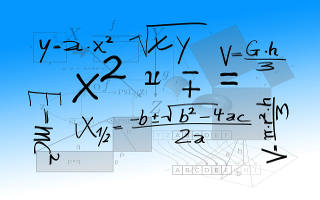Calculating The Return Percentages Of Slots Machines

The return percentages of slot machines is one of the last casino mysteries, so to speak. In all the other casino games the rules are disclosed and it’s quite easy to determine the house edge. In this article I’m going to take a closer look at how the return percentage of a slot machine is calculated and at the same token would also like to credit Michael Shackleford since it’s based on his findings.
How The Return Percentage Is Calculated
Slot machines are controlled by random number generators and computer microchips. It’s rather difficult to determine the theoretical return unless the player knows how the machine was programmed. Before I continue, let’s just define a slot machine quick. A slot machine is a gambling device that’s an actual or video representations of spinning reels. At times there might be some discrepancy since the slot payback percentages can be jaded especially if the payback of video poker is included. This is why it’s important casinos must only include the rankings for slots machines.
It’s not easy to obtain the information needed to analyze a slots machine. Slots managers have always kept their slot-return percentages under lock and key at all times and never disclosed it to anyone. Well-known mathematician, Michael Shackleford asked several slot manufacturers for the specifications (called ”PAR sheets”) to their machines with no luck. A machine can have multiple PAR sheets, each with its own selection of return percentages.
Even if you have the sheet it won’t necessarily tell you which machine it applied to or casino. Research is painstaking and it has to be meticulous. So, how did he do it? Michael said he used the PAR sheets for multi-line video-display slot machines. By doing this he identified certain combinations of symbols which narrowed down the possibilities. He said that he managed to determine the exact return percentage by plotting his findings on a map and the games played in each casino.
He spent countless of hours going from one casino to the next looking at the games, playing them and taking notes of the results. Adding different slot varieties to his survey. The idea behind this was to create a larger and more comprehensive sample. Most of the video slots machines he encountered were five cent denominated. As such his entire survey was based on the nickel machines. most players like to think that the higher the coin denomination the higher the return percentage. His findings does not make make any claims about the returns on machines other than nickles. However, inferences could be made based on the percentages on the nickel ranking.
The age old adage that casinos placed certain slots in certain areas on the casino floor is still a myth. Michael’s study revealed that the machines on the of the row fared no better on average than those placed in the middle. Also, there was no correlation between return and proximity to the main door, table game pit or high-or-low traffic areas.
The good news is that most of the casinos were consistent in their returns. If one nickel machine had a return of a certain percentage, then similar machines also had the same return percentage. But he also noted that some casinos did mix their tight and lose machines.
Some Slot Machine Myths and Facts
Myth
Slots machines have been programmed to pay out a set percentage of a bet. Once the jackpot is hit it won’t pay out any more. Alternatively, if the jackpot has not been hit in quite a while, it’s bound to pay out soon.
Fact
Each spin of a slot machine is completely random. The odds remain the same irrespective of the amount of spins made. The only exception are the fruit machines in England which are guaranteed to pay back a minimum return in the short run.
Myth
If I play with hot or cold coins it will increase my chances of winning significantly.
Fact
A coin’s temperature does not matter.
Myth: If I use a slot card the machines will pay less.
Fact
This is simply not true. The mechanisms that determines where the reels stop has got nothing to do with the card.
Myth
Most casinos have a switch which they use to make the slots tighter on busy weekends.
Fact
This is not true. To change the return of the machine, a technician must open it and change what is called the EPROM (Erasable Programmable Read Only Memory) chip. The weightings of the reels are determined by it as well as each theoretical return. Gaming regulations require that casinos disclose this information.
Conclusion
All slots machines use a random number generator (RNG) which determines where the reels will stop. The machines continuously draw millions of random numbers per second. The moment the player presses the button to spin the wheels the outcome is already determined. In other words once the random number is chosen it’s mapped out on a ”virtual reel”. Therefore, the moment the player hits the spin button his or her outcome has already been decided.
Reference
1. Gambling 102: The Best Strategies for All Casino Games by Michael ”The Wizard of Odds’‘ Shackleford
[addtoany]
0 Comments
Be the first to comment